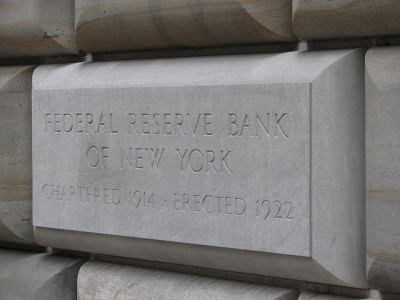
16 Nov How to End the Credit Crunch
The scariest thing about the current global economic crisis is the look of uncertainty and sometimes even panic in the eyes of many of those who are supposed to fix the problem. They clearly don’t have much of a clue. So, how could we solve the credit crunch? Really, what would it take?
The answer seems pretty obvious to me. The feds need to set up a Consumer Lending Authority that gives loans to people, yes, ordinary people, at rates close to what the Federal Reserve charges banks, which is practically zero. Okay, maybe charge a percent or two.
That way consumers could unwind the debt burdens too many of them carry themselves. The current approach is to give billions of taxpayer dollars to big banks, usually with few if any strings attached. That’s like giving money to the mafia to combat illegal loansharking. Last month, when, for the first time ever, I missed my payment to a credit card company, First National Bank of Omaha, by just a few days, the bank responded by retroactively increasing my interest rate from 1.9 percent to nearly 30 percent. When I called to protest they said, essentially, “sorry, sucker, them’s the breaks.” Nearly 30 percent! I’m taking steps to close that account. But the experience reminded me that these big national banks are in many ways now worse, or at least as bad, as the Mafioso loansharks of old. Giving these big banks more money won’t solve the problem. They are the problem. What’s more, the credit card industry’s often lowlife business practices make the sub-prime mortgage lenders seem like saints. In my direct experience, credit card companies routinely lie about the interest rates they charge, arbitrarily change the terms of loans, fail to disclose interest rates in online account summaries, and act in many other ways designed to lock consumers into a “debt-trap” from which they can never escape. One must constantly be on guard against the credit card industry’s scams and ripoffs.
A Federal Consumer Lending Authority, by contrast, could lend money to folks at reasonable rates who can demonstrate that they are basically credit worthy based on their ability to pay their bills over some more lengthy period of time, say, the last five or ten years, rather than the “what happened last month” standard used by the credit reporting agencies.
The only way to resolve the credit crunch is to resolve the credit crunch. And the best way to do that is to make credit available to consumers at reasonable rates. If the FDIC-insured, government-coddled banks won’t or can’t do that, then the feds must. The length and depth of this next Great Depression may well depend on how long it takes our economic policy makers to understand that our economy can only be rebuilt from the bottom up.



No Comments